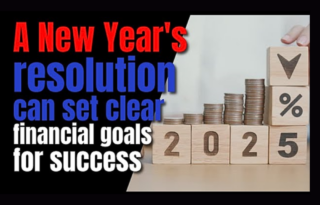Prices are Up in South Africa – A Warning of More Price Hikes in the Future

The entire nation experiences rising inflation because most economic sectors in South Africa show rising prices. A minor inflation increase during December 2024 will lead to fundamental changes in prize structures across the market. The South African Reserve Bank maintains its target inflation rate inside its authorized range yet professional analysts anticipate this rate will expand worse or become more elevated in future months. This article investigates South African economic trends and describes how inflation expands while tracing its original drivers and analyzing fuel prices on inflation levels and recent Bank interest adjustments alongside their estimated economic effects on the country.
Part 1: What is Driving Prices Up in South Africa?
Prices across South Africa will rise during the month of December 2024. The research paper identifies three primary drivers of inflation which include shifting real estate values as well as rising food costs and petroleum price fluctuations.
Inflation Rise: A Brief Overview
Consumer prices rose to 3.0% in South Africa during the month of December 2024. Prices of consumer goods reached 3.0% in the recent month demonstrating a 0.1% point increase above the 2.9% valuation from last month. Long-run inflation trends are affecting basic sectors throughout the country because of the predicted price increase. Within the targeted range of 3% to 6% set by SARB this rate component occupies the lowest portion. The price surge worrisome but the actual statistics prove the circumstances to be under control.
The Main Contributing Factors to Inflation
Some economic sectors demonstrated higher inflation rate growth over a year period. Stats SA recognizes three sectors that displayed inflation rate growth above the national rate:
| Category | Inflation Rate (%) | Contribution to Overall Inflation |
| Housing and Utilities | 4.40% | 1.0 percentage point |
| Miscellaneous Goods and Services | 6.60% | 1.0 percentage point |
| Food and Non-Alcoholic Beverages | 2.50% | 0.5 percentage point |
| Alcoholic Beverages and Tobacco | 4.30% | 0.3 percentage point |
- Housing and Utilities (4.4%) – Additional growth of 1.0 percent happened when goods along with services expanded to become a wide array of products.
- Miscellaneous Goods and Services (6.6%) – Additional growth of 1.0 percent happened when goods along with services expanded to become a wide array of products.
- Food and Non-Alcoholic Beverages (2.5%) – Food expenditure became both basic and severe due to the price increase which added 0.5 percentage points to the overall cost.
- Alcoholic Beverages and Tobacco (4.3%) – Tobacco products together with alcoholic beverages account for 0.3 percentage points of total current consumption but follow international high-end standards.
Goods vs. Services Inflation
The absolute inflation rate produces panic because commodity costs differ substantially from service prices:
- Goods: Goods inflation registered a 1.9% increase in its rates during December 2024. In December 2024 the inflation rate slightly grew to 1.9% while November 2024 had reported a comparable 1.6% inflation rate. Commodity product prices continue rising because yearly inflation has achieved a 1.9% rate.
- Services: The service sector price index rose to 4.2% through the quarter before ending at 4.3% in November 2019. The service sector maintains its position above commodities in inflation rates and demonstrates elevated speed of growth.
The 2024 Annual Inflation Rate
South Africa’s average inflation rate was 4.4% for 2024. Price increases between 2023 and 2024 reached 7.0% from 6.0% but this rate generated less impact than observed in 2023. Future analysis of price changes will be provided later however analysts need to investigate potential upcoming price rises.
Part 2: Fuel Price Impact: A Key Driver of Inflation
Fuel prices serve as the primary determinant for the current inflation rates worldwide. Petrol price elevation functions as the primary inflationary factor people analyze during investigations into modern life changes.
The Role of Fuel Price Changes
Fuel prices function as the main influence which forms inflation patterns throughout South Africa. During the first half of 2024 along with the middle of the year fuel prices remained low which allowed South African inflation to remain stable. But this reprieve is temporary.
- December 2024: During December 2024 South Africans encountered a 17c/litre rise in petrol costs which continued with a 12c/litre increase in the following January 2025.
- February 2025: The scheduled increase in February consists of rising fuel costs by 80c/litre or higher.
The continuously fuel prices are up in South Africa which directly feed into higher inflation, particularly within sectors on the heavy side of transportation, which include the delivery of goods and services delivery, public transport, etc. Prominent economic effects occur throughout the general economy when fuel prices rise because they increase the costs consumers must bear to live.
Part 3: Interest Rate Adjustments: The Future Outlook
Rising rates of inflation force interest rates to change during normal market operations. South African central bank monetary authorities exercise their power to shape economic expansion by modifying interest rates in order to manage inflation.
The Impact of Inflation on Interest Rates
When inflation levels increase the economy responds with an expansionary policy. However, even though inflation has risen, the SARB has hinted that the interest rates are to be cut. The SARB central bank is going to lower the interest rates by 25 basis points when it meets, but that does not promise to be enforced. Its prime mandate remains fighting inflation. Even though SARB has lowered the interest rates within the period of 2024, how long it maintains the reduction of interest rates in this very same order is unclear.
Future Interest Rate Trajectory
Actually, while inflation has rose one notch, it is highly probable that the bank will be slow in easing the rate cutting cycle until at least July.” In any event, the new interest rate trajectory way forward shall entirely depend on how inflation might shift and as a result in case external shocks‑a combination of policy changes related to global trade or geopolitical risks-bound to rock this economy.
SARB’s Inflation-Targeting Framework
At the heart of its operations the South African Reserve Bank employs an inflation-targeting mechanism to maintain an inflation rate between 3% and 6%. This central bank promises to keep inflation within a manageable level and promotes growth regardless of the signs.
Part 4: Fuel Price Increases: A Double-Edged Sword
Amongst the great challenges for SARB and to the public are high rising fuel prices. While falling petrol prices assisted to keep off the inflation within the year 2024, the rises of fuel prices have already made clear that such inflationary pressure in 2025 would be enhanced further. Early 2025 should see the beginning of real fuel price increases. The effects will be gargantuan on transport and energy costs affecting almost every area of the economy. The trickle-down effects of such price increases will slowly begin to find their way to consumers in the form of increased production costs for firms.
Part 5: Changes to the Inflation Basket in 2025
Thus, the South African CPI basket of 2025 will be reconstructed on the basis of new trends in consumer expenditure. This chapter gives information regarding the changes and the effects to the economy.
Adjustments to Consumer Price Index (CPI) Weights
The Consumer Price Index measurement basket maintained by Stats SA will receive an update during 2025. The revision is believed to base the revised basket on the most recent updates in inflationary measures. In other words, changes in the basket are expected to reflect new consumers’ spending and changes in new international standards.
- New Base Period: The base period for the inflation basket will be shifted to December 2024. This is done in order to capture the most up-to-date consumer expenditure data.
- COICOP 18 Update: In the year 2018, The United Nations Statistics Division adopted new series classification on individual consumption by purpose or the COICOP that shall also form part of the CPI to be used from the year 2025 going forward.
Introduction of Insurance and Financial Services Category
One addition to the inflation basket is a distinct category for Insurance and Financial Services. Previously, these fell under the category of Miscellaneous Goods and Services; this will help track the service much better. Other goods are exchanged between categories. Indeed, a computer and television have been listed under Information and Communication. Finally, mail services now fall under transport instead of coming under information and communication.
Conclusion
Overall, the inflation rate of South Africa is still within the range as designated by SARB, but Prices are up in South Africa exist in most sectors, especially fuel, housing, and food. This means the country is increasingly facing economic problems. As inflation increases, so will the number of price hikes, especially for fuel, raising the general cost of living. The future of interest rates in South Africa remains ambiguous, but experts are saying that the cycle of rate cuts will only continue at a reduced pace until mid-2025.
Call-To-Action: Want to stay ahead of the economic curve? Check out our article on South Africa’s inflation trends and gain insights into what the future might hold for interest rates and cost of living!




